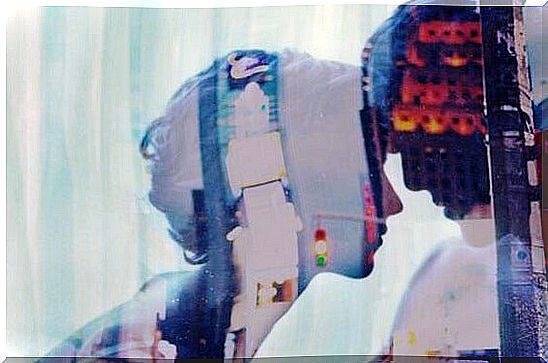Destructive Relationships: Why Can’t We Get Rid Of Them?

As much as we try to avoid it, in the end we always run into the same kind of partner: people who instill malaise, foment obsessions, and with whom we cultivate destructive relationships. Have you ever wondered why you attract people who are not for you? Could it be bad luck? Absolutely not. This condition has a name, a vicious circle of retraumatization.
When this pattern repeats itself relationship after relationship, something is wrong. We are the ones who choose these people and attract them in some way. Instead of blocking them, we invite them to come into our life. There is something about them that we find fascinating, even if sooner or later history repeats itself …
What is it that we neglect during the falling in love phase? What mistakes do we keep making when we get to know and associate with someone? To find an answer to these questions, we need to observe our behavior when we meet a person, but also retrace our childhood. For some reason, in fact, we repeat our past and relive an experience that at a given moment hurt us.
Laura’s story and her destructive relationships
Laura started having love affairs at 18. He had low self-esteem. She relied on social networks and chats where she found people she believed might be interested in her. In fact, she fell in love with the first boy who claimed to be interested. Although she initially disliked him physically, she was convinced that things would change over time.

That boy was making fun of her. By chance Laura discovered some messages addressed to other girls like “I had a good time with you the other day”. She never said anything, but over time she got tired of the situation. The relationship was now winding down, but before finally ending with that boy, Laura was already dating a new person. A married person. A man with whom she cheated on her partner who in turn had cheated on her.
Laura’s relationships have all been disastrous and she didn’t realize she was always making the same mistakes. She never gave herself any time alone, started relationships with people she didn’t really like. He was deceiving himself. It wasn’t love she felt, but she needed approval and fear of being alone.
All of Laura’s relationships were destructive and hinged on a single model. The people she dated were either married or cheating on her. In other words, Laura cultivated destructive relationships from which the partners distanced themselves, leaving her alone, replacing her with another person, cheating on her. .. What did all this depend on?
Laura had experienced a particular family situation: her father betrayed her mother, she allowed him to do so and at a certain point she began to do the same. The parents were on the verge of divorce, but they didn’t. They left only after 20 years. Laura’s mother had always felt betrayed, as if she were the other woman, as her husband repeatedly cheated on her and even had a child from one of her relationships.
Break out of the vicious circle of retraumatization
Laura was unaware of the influence the family environment had had on her. In love he chose partners similar to the father figure. Somehow, she relived the loneliness, the feeling of being the other and the fear she felt in childhood.
Always attracting the same type of people is nothing more than a warning sign to start being aware of what is happening to us and therefore make a decision about it. It is useless to blame others. We are responsible for our life and only we can decide how to live it.

It is not a simple situation. Laura, for example, might have thought that perhaps it was better to remain alone to avoid always running into people who risked hurting her. In this sense, he would have rejected any potential partner, unless he perpetuated the model he had chosen up to that point. She would have limited herself and probably would not have been happy.
This is why it is important not to fall into extremes. Finding the balance, understanding where the error lies and what drives us to carry on destructive relationships. Analyzing our behaviors is essential to cultivate healthy relationships.
Getting out of a destructive relationship is possible. You just need to be aware of the trauma that lives within us and that marks us. Our main goal is to overcome it.
Let’s not blame ourselves, let’s not behave as victims and above all let’s not adapt. With a single decision we can change the course we have followed so far. So, dear readers, are you ready to face the fear of change?










